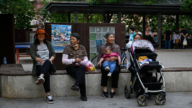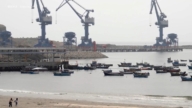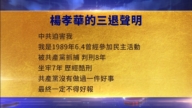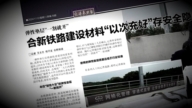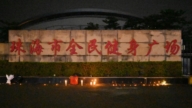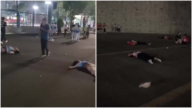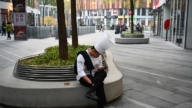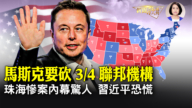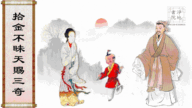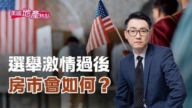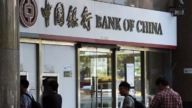【新唐人2011年8月6日讯】中国社会科学院8月3号发布的《中国城市发展报告》表示,中国城市贫困人口达到5千万人,呈现不断上升的趋势。而海内外专家指出,5千万城市贫困人口被严重低估。经济学家谢国忠表示,中国当前的体制只能让少数人受益,是赤裸裸的劫穷济富。
社科院的这份报告以城市贫困人口比例在7.5%到8.7%之间保守估算,得出中国城市贫困人口约有5千万人,年均收入7500元到8500元人民币,月均收入只有6、7百元。当中有一半的人没有受到政府的最低生活保障照顾。
住房与城乡建设部政策研究中心主任陈淮等专家认为,5千万只是第六次人口普查数据6.6亿城镇人口的近8%,中国城市中只有7-8%的人是贫困人口,这个估计恐怕过低。
这份报告显示,西部和中部的贫困人口都大约在1700万人左右,东北地区有845万人,最富裕的东部地区也有756万人贫困。
报告指出,中国城市贫困人口从1990年代后就呈现不断上升的趋势,原因是物价不断上涨、社会保障措施不力、房价频频攀升、就业形势严峻、贫富差距不断扩大。
这份报告的作者之一、北京城市学院讲师蒋贵凤表示,中国城市贫困主要是从国有企业改革、产业结构调整、一些资源性城市逐渐枯竭,造成大量失业人口开始的。
去年9月在第65届联合国大会上,温家宝发表讲话承认,中国有1.5亿人口生活在联合国设定的贫困线之下。而海内外专家指出,温家宝的这个数字也估计过低。
财经评论家草庵居士:“联合国规定每天收入在1.25美元以下的人属于什么人呢?是赤贫的人口;一天收入2美元以下的是贫困人口。如果说我们提高到1.25美元这个标准线是多少?2亿5千万人是赤贫的;如果达到2美元收入的时候是多少?全中国有9亿人口是属于联合国规定的贫困人口。”
商务部长陈德铭承认,中国贫困人口在世界上排名第二。在今年两会期间,全国政协委员沈雯在一份提案中指出,目前中国的贫困线1196元是政府2009年制定的,太低的贫困线让过亿居民人为的“被脱贫”。
《中国城市发展报告》副主编宋迎昌列举了城市贫困问题的具体表现,包括:农民工工资较低、房价上涨过快、交通拥堵、看病上学难等等。
一些专家认为,城市贫困恶化现象将加剧社会冲突,陷入恶性循环。宋迎昌表示,现时多个社会问题,源于政策脱离民生需要,社会过分以经济为核心发展,长此以往,经济和社会都不能持续发展。
前中国经济体改所综合研究室主任程晓农:“真正的问题是所谓的收入分配两极分化和社会贫困化,或者相对贫困化。空谈改善收入分配,而不改善经济结构,那是不可能实现的。”
经济学家谢国忠7月28号指出,北京政府一直都试图无视潜在问题,通过滥发货币、大肆增加政府财政支出来推进经济发展。中国目前的增长模式,只能让很少一部分掌管国有资产、控制公共财政支出的人受益。
他表示,而在过去几年内,持续上升的房价和通胀,储蓄贬值,把更多的人抛弃在后面。比如说,一年期存款利率应该尽快调高到6%。让利率保持这么低的水平,就是赤裸裸地抢劫穷人,养肥富人。
《炎黄春秋》杂志副社长、原新华社高级记者杨继绳:“市场经济以后,行政权力没有得到改革,还是政经不分,很多经济活动需要官员审批,谁能够接近审批权力的人,谁就可以得到很多财富,所以,权力进入市场。”
《中国当代社会阶层分析》一书作者杨继绳指出,所谓的“中国模式”,就是这种权力市场经济模式,它的必然结果是社会不公正,贫富两极分化,腐败丛生,民怨沸腾,会产生仇官仇富的社会心理。不搞政治体制改革,中国社会的高压锅最终会爆炸,既得利益阶层也会完蛋。
新唐人记者李元翰、肖颜综合报导。
Urban Poverty Underestimated
On August 3, Chinese Academy of Social Sciences (CASS)
released the China Urban Development Report,
indicating that China’s poor urban population
is 50 million, and is still increasing.
Domestic and overseas experts point out that the
“50 million" mark has been seriously underestimated.
Economist Xie Guozhong said China’s current system
can only benefit a few. It is plain robbing of the poor.
An Chinese Academy of Social Sciences report estimated that
with a conservative ratio of urban poor to entire population
being 7.5-8.7%,
Poor urban people in China are about 50 million.
Their annual income is RMB 7,500 to 8,500 (US$1,250).
Half of them have not received
the government’s minimum living allowance.
Expert and Director, Chen Huai
from the department of Housing and Urban Construction,
said 50 million is just about 8% of the 660 million
urban population. The estimation may be too low.
The report shows that poor people in the Western
and Central regions of the country are about 17 million each.
There are about 8.45 million poor in the Northeastern region.
The richest Eastern region has 7.56 million people in poverty.
The report points out that China’s poor urban people
have been increasing in number since the 1990s.
Reasons include inflation, weak social security measures,
rising housing prices, increasing unemployment,
and the growing wealth gap between the rich and the poor.
One of the authors of the report, Jiang Guifeng,
a lecturer at Beijing City University,
said China’s urban poverty started mainly from state-owned
enterprise reform, industrial structure adjustment,
and the gradual depletion of some resources in the cities,
causing heavy unemployment.
In September 2010, in the 65th UN General Assembly,
Chinese Premier Wen Jiabao recognized during his speech,
that China has 150 million people
living under the poverty line as set by the UN.
Domestic and overseas experts pointed out
that Wen’s estimate was too low.
Caoan Jushi (a financial analyst) told Radio Sound of Hope,
“United Nations defined people with a daily income of
less than $1.25 as extremely poor; less than $2 a day as poor.
If we use $1.25 as a base line,
then 250 million people are in extreme poverty.
With $2 as the standard daily income,
900 million people are poor in China."
Minister of Commerce, Chen Deming, acknowledged
that China’s poor people ranked second in the world.
During 2011’s Two Communist Party meetings,
Shen Wen, member of the Chinese People’s Political
Consultative Conference (CPPCC), said in a proposal that
the current poverty line is RMB 1196, set in 2009.
A low poverty line puts millions “out of poverty."
China Urban Development Report deputy editor,
Song Yingchang, gave examples of of urban poverty,
including lower wages of migrant workers,
soaring housing prices, traffic congestion,
and lack of access to medical care and education.
Some experts believe that urban poverty will exacerbate
social conflicts, creating a vicious cycle.
Song says that the current social issues came from policies
not focusing on people’s living, but on economic development.
In the long run, the economy and the society cannot
be prioritized simultaneously.
Cheng Xiaonong (former Director of Integrated Research
Office of Economy Reform Institute) told Radio Free Asia,
“The real problem is the so-called polarization
of income distribution and social impoverishment,
or relative impoverishment. Improving income distribution
will be impossible if the economic structure is not improved."
Economist Xie said on July 28, that the Beijing government
has been trying to ignore the potential problems,
improving economy by printing cash
and increasing government expenditure.
China’s current growth model can only benefit a few
who are in charge of state assets and public expenditures.
Xie thinks that over the past few years, devaluation of savings
and rising prices and inflation pushed more people backward.
For example, the current one-year deposit rate
should be raised to 6% soon.
Allowing interest rates to keep at such a low level
is blatantly robbing the poor and enriching the wealthy.
Yang Jisheng (Vice President of Chronicles of History,
former senior reporter of Xinhua News) told RFI:
“In a market economy, the executive power is not reformed,
but it still mixes political and economic powers.
Many economic activities require officials’ approval.
Those close to authorities can obtain more fortune.
So the political power entered the market."
“Contemporary Analysis of China’s Social Class" author,
Yang pointed out that the so-called ‘Chinese model’
is the political power market economy model,
which will inevitably result in a social injustice,
polarization between rich and poor, rampant corruption,
public complaints, and hatred toward the rich.
Without a political reform, China’s social pressure-cooker
will explode, destroying those with vested interests.
NTD reporters Li Yuanhan and Xiao Yan.


